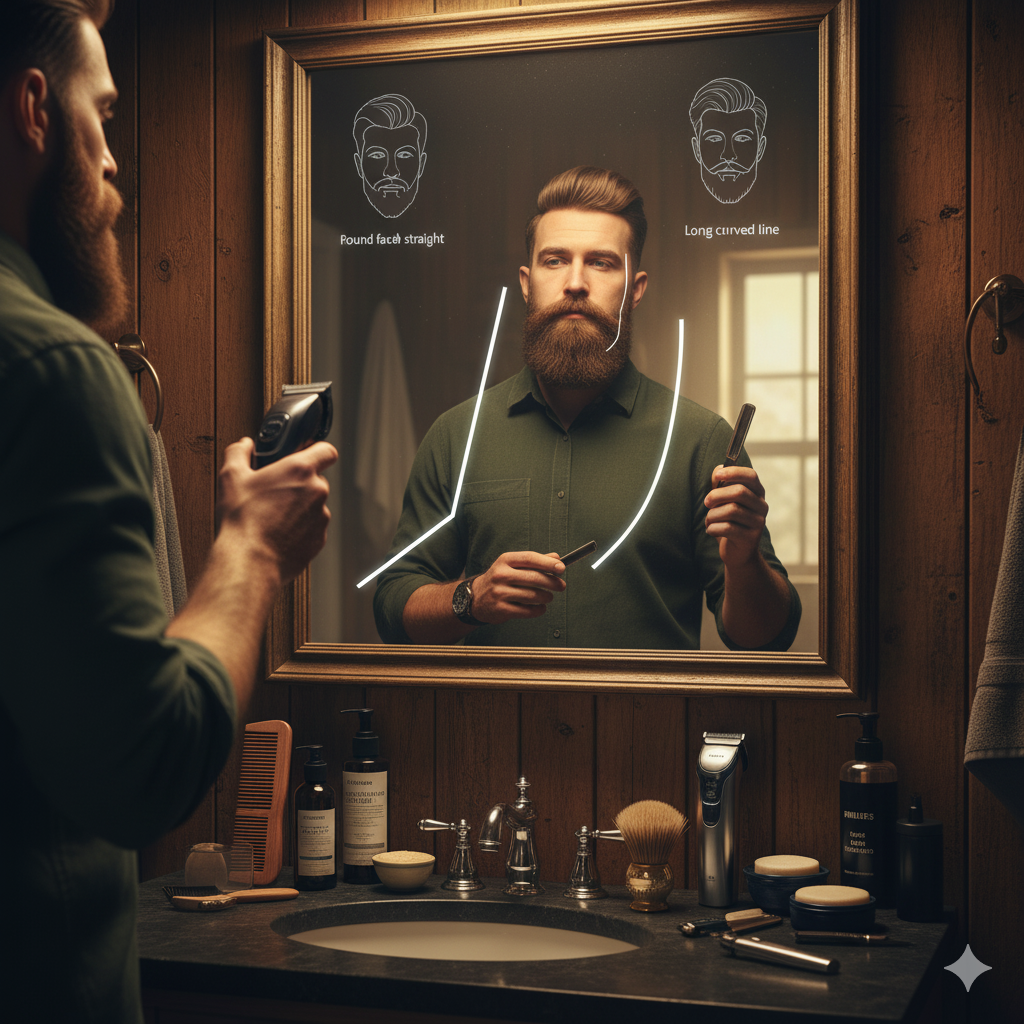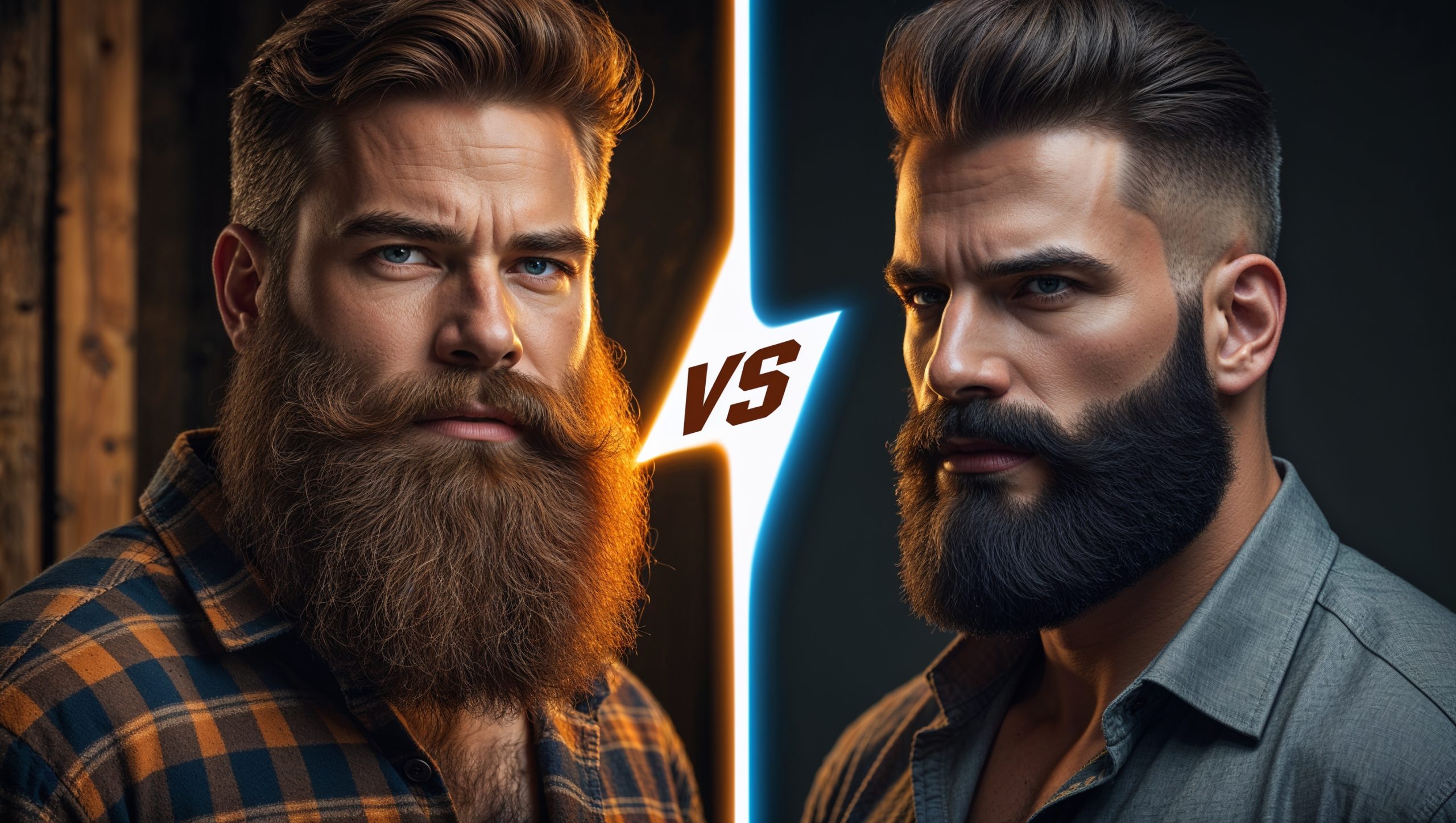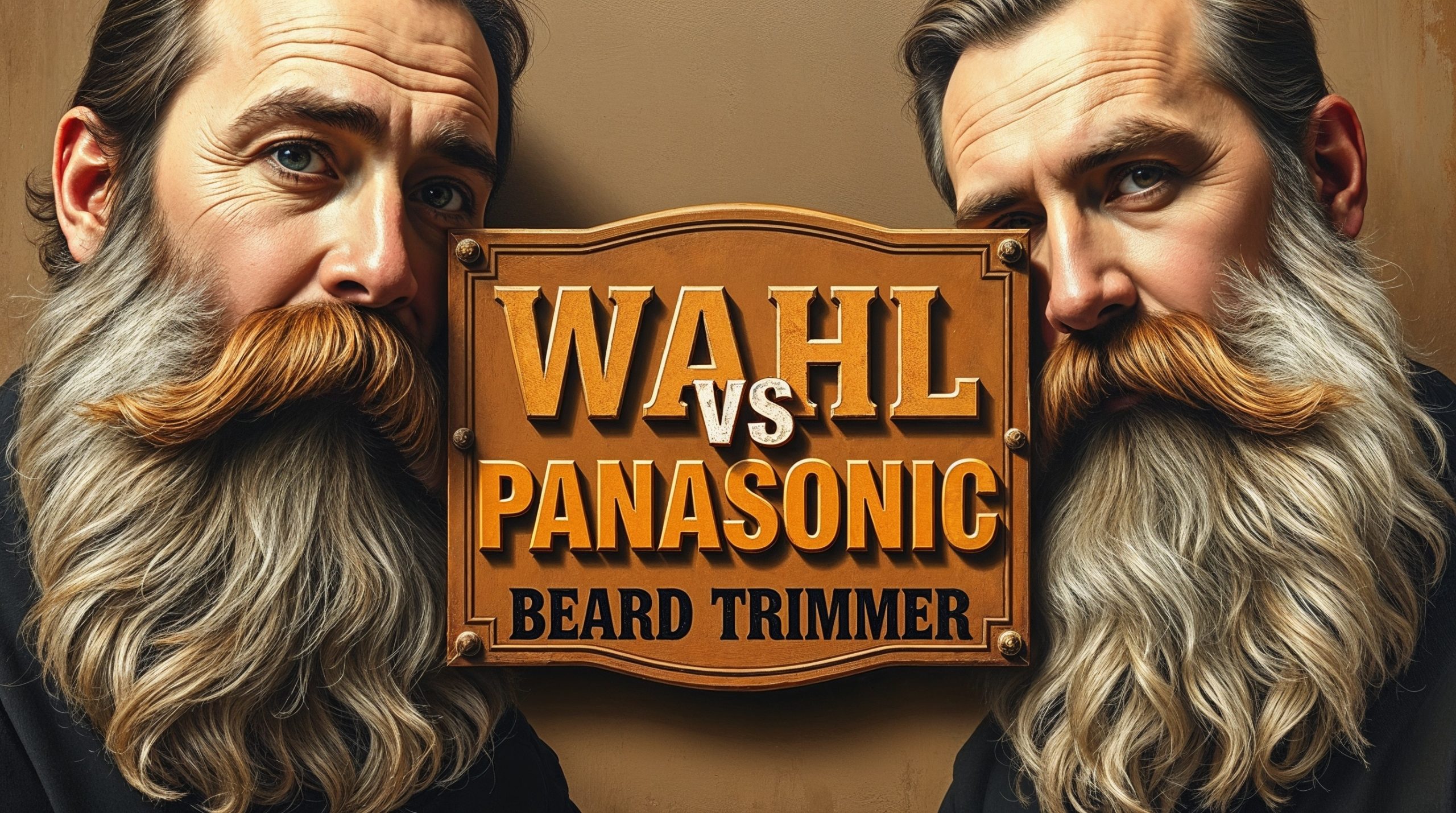I. Introduction: Mastering the Beard Cheek Line
The grooming of facial hair involves a series of critical decisions, none more impactful on the overall aesthetic than the management of the upper boundary—the beard cheek line.1 While the neckline establishes foundational volume and structure, the cheek line serves as the immediate frame of the beard, influencing the perceived shape, density, and formality of the entire style.1 A successful cheek line is crucial because it draws visual attention upward, emphasizing the eyes and cheekbones; conversely, a poorly defined line can result in an unkempt or “sloppy” appearance.1 The historical context suggests the significance of this line is long-standing, with ancient Roman emperors potentially associating the height of a man’s beard with his status and power.3 In the modern era, the cheek line communicates attention to detail and grooming rigor, with experts noting that a poorly executed cheek line has the capacity to “ruin many a full beard”.1

The Core Conflict of the Beard Cheek Line: Natural Curve vs. Defined Edge
The central decision for any beard wearer is the choice between a defined edge and a natural curve. The Defined Edge is characterized by sharpness, precision, and high maintenance. This style imparts structure and a professional demeanor, particularly advantageous for individuals maintaining shorter beards or heavy stubble.3 The sharp contrast between the clean-shaven cheek and the dense beard hair is visually striking. In contrast, the Natural Curve champions a rugged, full, and softer aesthetic. This approach requires less frequent upkeep and yields an impression of greater facial volume, making both the face and the beard appear larger.4 The natural line is generally preferred for individuals aiming for maximum length and fullness.5
Ultimately, the choice of style must align with the individual’s natural growth pattern, including the hair density and the height at which the hair naturally grows.1 The willingness to commit to a style must also factor in the amount of maintenance required; the natural line demands low upkeep, whereas the defined line necessitates frequent trims.3
Your Starting Point for the Beard Cheek Line: Hair Density and Genetics
The practical boundaries of cheek line maintenance are fundamentally dictated by biology. Beard density is largely determined by genetic factors, specifically the hair follicle’s sensitivity to dihydrotestosterone (DHT), rather than simply circulating testosterone levels.7 This genetic predisposition sets the achievable limit for beard thickness.
If the natural growth pattern exhibits patchiness or sparsity on the upper cheek, attempting to impose a sharp, high, defined line is often counterproductive. Such attempts may result in a visually disconnected “floating beard” appearance. An important consideration is that patchy growth can often be remedied simply by allowing the hair sufficient time to mature; patience is key, with many beard experts recommending an initial growth period of 90 to 120 days.3
It is frequently observed that many men, driven by self-consciousness or peer pressure, prematurely trim their cheek line far too low.1 This reduction in volume occurs because they lack the confidence or patience to allow the hair to fill in properly. They often mistake hair that appears sparse or “straggly” for permanent thinness, leading them to cut the line lower than necessary, which artificially diminishes the beard’s eventual potential fullness.1 Therefore, for those seeking maximum density and the appearance of a rugged, full beard, the initial challenge is psychological: trusting the growth process and resisting the urge to remove anything beyond truly isolated, stray hairs.
II. Determining Your Ideal Beard Cheek Line Height and Shape

The establishment of the cheek line is a deliberate act of structural grooming. The focus is on finding the optimal beard cheek line that complements the wearer’s features.9 It is not merely about trimming but about employing the line as a powerful tool for visual contouring and facial structure correction.9
The Golden Rule of Beard Cheek Line Placement
For most individuals seeking a balanced and flattering appearance, a fundamental guideline exists: the “imaginary line” rule. This involves envisioning a straight line extending from the corner of the mouth to the middle of the ear.3 This position represents a strategic equilibrium, retaining enough hair to achieve fullness and properly frame the face, while ensuring the line is low enough to prevent the beard from looking overly dominant or overwhelming the cheekbones.
Mapping Your Natural Beard Cheek Line Growth Transition
Prior to any trimming, experts recommend allowing the beard to grow undisturbed for several weeks to clearly reveal the underlying natural growth pattern.3 The objective is to identify the precise transition point where the dense, core beard hair begins to thin out and become sparser, consisting only of “straggly” hairs.3 A critical piece of advice is that perceived sparsity must be judged cautiously, as many areas that seem thin early on will eventually fill in as the beard gains another month or so of length.2 Rushing the definition process before this time can lead to a prematurely low cheek line.
The Architectural Approach: Matching Beard Cheek Line to Face Shape
The choice of line shape is an advanced grooming technique used to counterbalance or enhance natural facial features. The angle and curvature of the cheek line act as visual vectors that alter the perceived structural dynamics of the face.
- Round Faces: These faces benefit from structural definition to counteract softness and create a slimming effect. The recommendation is a straight cheek line maintained at a steep angle. This choice helps to offset roundness, introduces necessary angularity, and should be placed slightly higher to maximize the added definition.3 The steep, straight line creates a definitive shadow and break point, which pulls the visual focus along that line, thereby contributing to the desired illusion of leanness.
- Long and Angular Faces (e.g., Rectangular, Diamond): The goal here is softening and minimizing vertical length. A curved beard cheek line is recommended as it disperses visual focus, avoiding harsh shadows and softening the face’s sharp contours.1 This curvature minimizes the vertical draw, preventing the face from appearing too elongated.15 For faces with naturally sharp chins (diamond or heart shapes), the strategic use of blunt edges and a squared-off neckline is advised to prevent the entire aesthetic from drawing focus downward to an already pointed chin.17
- Square Faces: To soften a prominent jawline, a square face is often best complemented by adopting a natural or slightly lower cheek line position.3
- Oval Faces: This shape offers the most flexibility due to its inherent balance and can successfully support experimentation with various heights and shapes.3
A summary of these principles is presented in Table 1 below, illustrating how the cheek line operates as an advanced optical tool for altering perceived facial structure.
Table 1: Beard Cheek Line Style Recommendations by Face Shape
| Face Shape | Aesthetic Goal | Recommended Cheek Line Style | Rationale |
| Round | Lengthening & Definition | Straight line, steep angle, slightly higher placement | Offsets roundness and adds angular definition 3 |
| Square | Softening Features | Curved line, natural or slightly lower placement | Softens angular features and strong jawline 3 |
| Oval | Versatility & Balance | Experimentation; straight or soft curve depending on beard length | Flexible; can support high or low lines 3 |
| Long/Angular | Widening & Softening | Curved line, lower placement | Softens sharp contours and minimizes vertical length 1 |
| Diamond/Heart | Stability & Fullness | Blunt edges; avoid overly pointy lines | Accentuates structure without drawing focus downward 17 |
Visualizing Symmetry and Precision
Regardless of the chosen style, maintaining symmetry is non-negotiable for a professional look. Individuals often struggle to ensure the line height is consistent on both sides.18 To address this, tools such as beard shaping templates or placing a simple beard comb horizontally along the face can serve as effective rulers.19 A highly effective technique utilized by professionals involves the use of a barber pencil (or skin marker) to first draw the desired line. This preparation step allows for meticulous symmetry checks before any irreversible hair removal occurs.18
III. Execution Strategy A: Achieving the Razor-Sharp Defined Beard Cheek Line
The defined beard cheek line relies on a stark contrast between dense beard hair and clean, shaven skin.3 This defined edge is the aesthetic signature of professionalism and high maintenance, relying on this stark contrast between dense beard hair and clean, shaven skin. This style requires considerable discipline, as any stray hairs become immediately prominent.3 To maintain the requisite crispness, this style typically requires trimming and touch-ups every one to two days.18
Step-by-Step Tutorial: Creating the Defined Beard Cheek Line
- Preparation and Visualization: The beard must be thoroughly washed, dried, and combed downward to facilitate identification of the natural growth line.6
- Mapping the Line: The desired line, typically straight, should be visualized extending from the lower part of the sideburn down to the corner of the mouth.18
- The Art of the Pre-Line: For assurance of precision and symmetry, a preparatory step is highly recommended: applying a barber pencil to mark the desired line. This allows the user to confirm the balance of the line in the mirror before committing to the cut.18
- Initial Definition Cut: The hair immediately above the marked line is removed using a precision trimmer or clippers, typically a T-blade model (e.g., Andis T-Outliner, Wahl Detailer ), with no guard attached.18 This defines the initial sharp edge.
- Refinement: For the truly razor-sharp contrast, the skin above the line must be shaven. Experts advise using a straight razor or a safety razor, beginning with a pass with the grain to minimize irritation.5
- Softening the Corner (Optional): If the defined straight line appears too severe or harsh, the transition point where the sideburn meets the cheek line can be slightly rounded off to provide a more natural feel.18
Advanced Detail: The Tapered Beard Cheek Line (Faded Sharpness)
An alternative to the hard, uniform line is the beard fade or tapered line on the cheek.24 This technique provides crisp definition at the lowest edge but transitions the hair length gradually to bare skin, preventing the harsh visual break associated with a solid, blocky beard.24 The technique requires starting with the longest guard size near the highest point of the beard (top lip area to sideburn). The groomer then switches to the next shorter guard, trimming a quarter inch higher up the cheek. This process is repeated with progressively shorter guards, moving higher toward the sideburns until a seamless gradient is achieved.19 For blending, the clipper-over-comb method is an equally effective alternative, as it allows for meticulous length control without total reliance on guard sizes.19
A significant challenge associated with achieving the razor-sharp line is the visibility trade-off. While the use of precision razors (such as DE or straight edges) is required for the sharpest finish 24, the physical housing and blade size of these tools often obstruct the user’s line of sight, making it difficult to precisely stop the cut at the intended edge.28 This inherently increases the risk of error, such as shaving inadvertently into the dense beard area. To mitigate this, preparatory marking with a pencil or using smaller, fine detailing tools is essential for maintaining precision during the final pass.7
IV. Execution Strategy B: The Effortless Natural Beard Cheek Line

The natural beard cheek line is the preferred strategic option for individuals struggling with sparse or patchy growth, as it maximizes the visual density of the beard.8 It conveys a rugged aesthetic, requires lower maintenance, and is best suited for longer beards where fullness is prioritized over geometrical neatness.1 The primary goal of this strategy is not to impose an artificial line, but rather to remove only the individual hairs that create a truly unkempt appearance.2
Step-by-Step Tutorial: Maintaining the Soft Beard Cheek Line Curve
- Patience and Full Growth: The foremost tool in this strategy is patience. The beard must be allowed to fully develop (90 to 120 days) before the natural line is fully assessed.8 Premature trimming, driven by low confidence, must be avoided to ensure maximum volume.1
- Identify and Isolate Stragglers: After combing the beard downward, the focus shifts entirely to identifying and targeting the individual, sparse hairs that protrude clearly above the main body of density.2
- The Stray Hair Sweep: To create a soft, diffused edge rather than a harsh boundary, grooming scissors or a trimmer with a sufficiently long guard (e.g., a number 3 or higher) should be used to gently sweep the area, removing only the longest, most outlying hairs.26
- Blending for Softness: If minimal blending is desired, the Clipper-Over-Comb Technique provides a superior method compared to relying on fixed guard lengths. This technique allows for meticulous feathering of the hair right up to the bare cheek, preserving the density and fullness that define the natural style while eliminating any “sloppy” appearance.19
The selection of the natural line is a functional volume-maximizer. Over-defining the cheek line, particularly by cutting it too low, is a direct sacrifice of volume in exchange for perceived neatness.4 For those aiming for the appearance of thickness, the natural line is the most strategic approach, utilizing every available hair follicle to achieve optimal coverage.8
V. Troubleshooting and Skin Health: Maintaining the Perfect Beard Cheek Line

Maintaining a perfect beard cheek line is complicated by common issues related to density and skin irritation. Addressing these challenges is paramount for long-term grooming success.
Conquering Patchy Growth on the Beard Cheek Line
The most effective strategy for managing patchy growth is sustained patience. Experts note that often, allowing the beard 90 to 120 days of uninterrupted growth will enable seemingly sparse areas to fill in naturally as surrounding hair gains length.3 While hair density is genetically controlled by DHT sensitivity, certain interventions can aid growth; topical Minoxidil (Rogaine) is a clinically recognized option for stimulating hair growth in targeted areas.33 A simple aesthetic solution involves using a boar’s hair beard brush to train longer hairs to lie over and camouflage sparser spots.31
Preventing Razor Bumps and Ingrown Hairs Near the Beard Cheek Line
The required closeness of the Defined Edge style, which necessitates frequent shaving of the upper cheek area, increases the common risk of razor bumps (Pseudofolliculitis Barbae), particularly for individuals with coarse or curly hair.34
The maintenance required to achieve a consistently crisp line—which often involves close, frequent shaving—directly conflicts with medical recommendations for preventing ingrown hairs, which suggest shaving less often and avoiding cuts too close to the skin. This establishes a clear health and comfort tax levied by the Defined Edge style, necessitating a robust pre- and post-shave protocol to mitigate chronic irritation.
The Pre-Shave Protocol:
To minimize friction and prevent hairs from being cut beneath the skin’s surface, the following steps are crucial:
- Shave only after a hot shower or use a warm compress for five minutes to soften the hair.13
- Apply a high-quality pre-shave oil (such as Bevel Pre-Shave Priming Oil or Lather & Wood for coarse beards) to create a protective barrier between the skin and the blade, softening the hair and reducing tugging.
- Apply a moisturizing shave cream and ensure the lather remains active throughout the process.27
The Shaving Technique:
Use a sharp, single-blade razor, or set electric clippers to leave slight stubble, avoiding cutting the hair too close. Critically, always shave in the direction of hair growth in the sensitive cheek area.
The Post-Shave Care:
Rinse with warm water, apply a cool compress, and finish with a soothing aftershave.27 Regular use of an exfoliating scrub can also aid in releasing trapped hairs.
The Recovery Plan: What to Do If Your Beard Cheek Line is Cut Too Low
A frequent grooming mistake is creating the appearance of a “chin strap beard” by inadvertently dipping the line too low.2 If the line is uneven or set too low, the only true remedy is time, as facial hair grows relatively quickly.32 It is reassuring to note that minor imperfections often go completely unnoticed by others.5 If a significant error is made, the individual should stop shaving the area immediately. They may strategically adjust the line on the opposite cheek to match the lower side temporarily while patiently waiting for the error side to catch up.
VI. Essential Tools of the Trade for Your Beard Cheek Line (Affiliate Focus)
Successful beard cheek line mastery hinges upon the right selection of tools, matching capability to the desired definition and personal skill level.
The Core Kit for Beard Cheek Line Mastery
Detailing Trimmers: Tools like the Andis T-Outliner or Wahl Detailer, known for their powerful motors and specialized T-blades, are essential for initial line creation and removing volume. These are professional-grade devices optimized for crisp line work.20
Precision Razors: Straight razors and Double Edge (DE) razors provide the absolute closest shave for maximum definition, offering an extremely precise edge.6 However, they require a high level of skill to wield effectively.
Symmetry Aids: Beard shaping tools and stencils (such as The Cut Buddy) are valuable for beginners or those seeking guaranteed symmetry, providing a clear template to ensure the line is balanced across both cheeks.

The Philips Norelco OneBlade 360 is a revolutionary new hair removal device for men designed for those who wear facial styles, beards, or stubble. Forget about using multiple steps and tools. OneBlade does it all.
Featured Tool Review for the Beard Cheek Line: The Hybrid Detailer (Philips Norelco OneBlade)
The Philips Norelco OneBlade represents an innovative hybrid solution that excels at detailing and line work. For defining the beard cheek line, its suitability is rooted in its unique design: the razor-thin profile of the blade makes it highly maneuverable, allowing the user to cut precisely along the desired line without the blade housing obstructing the line of sight—a common problem with bulkier precision razors.
The most significant benefit of the OneBlade is its low irritation profile. It delivers a close cut, approximating the stubble remaining 24 hours after a traditional close shave, without the skin pulling or tearing associated with typical multi-blade cartridges or zero-gapped clippers. This drastically minimizes the risk of razor bumps, making it an ideal choice for sensitive skin that requires the frequent lining necessary for a sharp aesthetic. The popularity of this tool demonstrates a successful solution to the tool compromise in home grooming. While the ideal professional technique involves a powerful T-blade followed by a straight razor for maximum sharpness, this complexity introduces high risk and time commitment for the average consumer.29 The OneBlade bridges this gap, providing efficient, “barber-level” line creation capability with minimal irritation and setup time.
Table 2 provides a comparative analysis of common grooming tools relative to their utility for cheek line maintenance.
Table 2: Beard Cheek Line Grooming Tool Comparison and Selection
| Tool Type | Best For | Line Definition Result | Pros for Cheek Line | Cons for Cheek Line |
| Precision Trimmer (T-Blade Clipper) | Initial Lineup, High Volume Removal | Extremely Crisp/Sharp | Powerful, professional results, excellent control 20 | Risk of scratching skin if zero-gapped; requires subsequent razor pass for smoothness 28 |
| Hybrid Trimmer/Shaver (OneBlade) | Daily Maintenance, Sensitive Skin | Sharp, Clean, Low Irritation | Versatile, gentle, reduces ingrown hairs, easy to use for detailing | Not as close as a razor; requires blade replacements |
| Straight/Safety Razor | The Ultimate Close Shave | Closest, Razor-Sharp | Highest precision and smoothness, superior visibility (straight razor) 21 | High skill required; severe risk of nicks/ingrown hairs if technique is poor or pulled skin 13 |
| Shaping Stencils/Combs | Beginners, Symmetry Checks | Defined Curve or Straight Line | Ensures consistent results and symmetry across both sides | Cannot replace skilled hand-eye coordination; can feel awkward to use 38 |
VII. Conclusion: Consistency is the Final Edge for the Beard Cheek Line
The optimal beard cheek line configuration is a personalized decision governed by natural growth patterns, facial structure, and desired maintenance commitment.
The Defined Edge style demands stringent adherence to a maintenance schedule, requiring touch-ups every one or two days to maintain the crisp contrast and prevent the appearance of untidiness.18 Conversely, the Natural Curve or blended look allows for a softer, less frequent maintenance cycle, with touch-ups often necessary only every three to five days to sweep away isolated stray growth.3
Grooming experts consistently advise individuals that beards grow back quickly, thereby encouraging experimentation to discover the most flattering profile.32 The primary obstacle to achieving an excellent beard cheek line is often the fear of allowing the beard to grow too high or too full.1 Regardless of the chosen style—sharp or natural—the commitment to consistency is the final, defining edge. Regular trimming and attention to detail ensure a polished, professional look that ultimately enhances the wearer’s overall appearance.29





